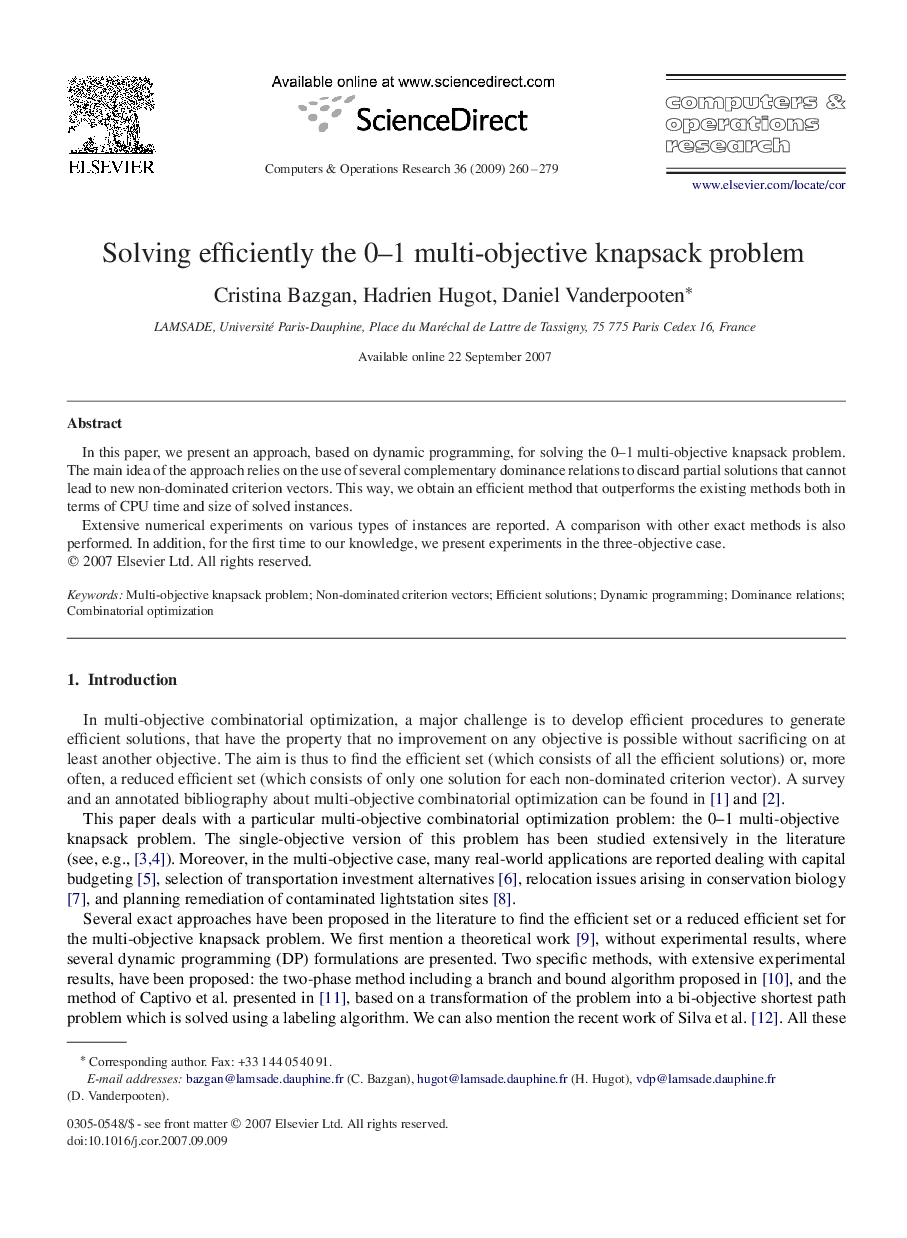| Article ID | Journal | Published Year | Pages | File Type |
|---|---|---|---|---|
| 474848 | Computers & Operations Research | 2009 | 20 Pages |
Abstract
In this paper, we present an approach, based on dynamic programming, for solving the 0–1 multi-objective knapsack problem. The main idea of the approach relies on the use of several complementary dominance relations to discard partial solutions that cannot lead to new non-dominated criterion vectors. This way, we obtain an efficient method that outperforms the existing methods both in terms of CPU time and size of solved instances.Extensive numerical experiments on various types of instances are reported. A comparison with other exact methods is also performed. In addition, for the first time to our knowledge, we present experiments in the three-objective case.
Related Topics
Physical Sciences and Engineering
Computer Science
Computer Science (General)
Authors
Cristina Bazgan, Hadrien Hugot, Daniel Vanderpooten,
